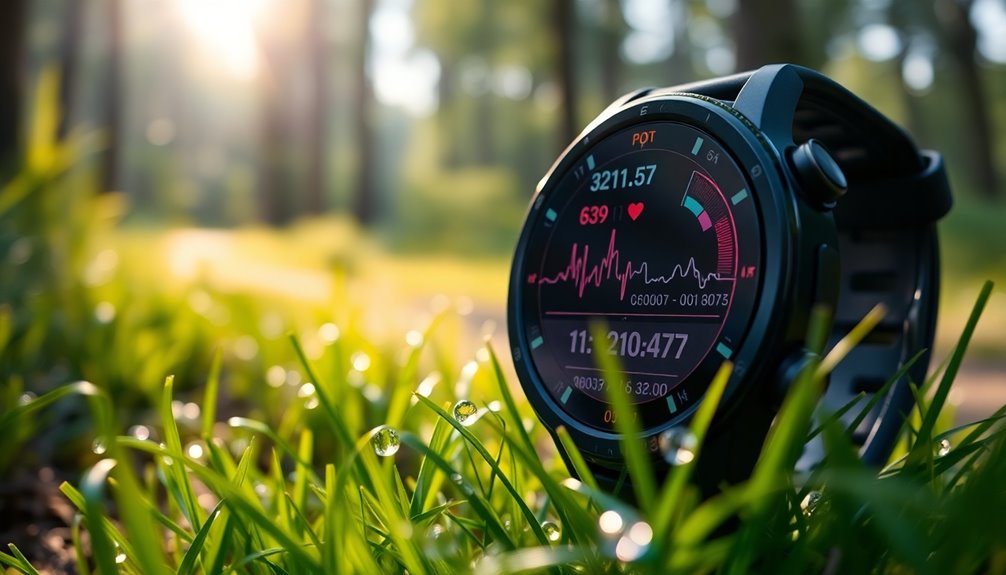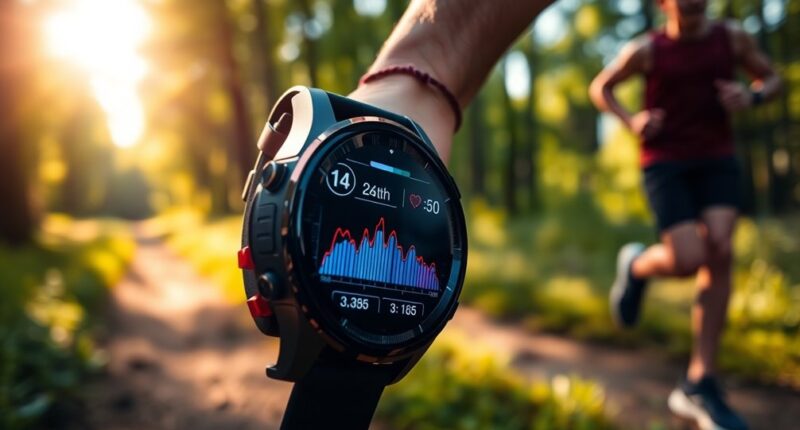Your running watch collects crucial metrics like heart rate variability, pace, and stride length, which can signal potential injury risks up to two weeks in advance. By monitoring these metrics, you'll gain insight into your training load and recovery, helping you adjust your regimen proactively. Ignoring these data points could lead to overuse injuries, but staying aware can enhance your performance. There's so much more to discover about optimizing your training using this hidden data.
Key Takeaways
- Running watches collect metrics like heart rate variability and training load, which can indicate potential injury risks.
- Historical injury data helps identify patterns correlated with current training, enhancing injury risk predictions.
- Predictive algorithms analyze accumulated data, potentially alerting users to injury risks up to two weeks in advance.
- Monitoring changes in ground contact time and stride length can signal biomechanical shifts leading to injuries.
- Regularly reviewing data insights allows for timely training adjustments, fostering a proactive approach to injury prevention.

As you lace up your running shoes and strap on your watch, you mightn't realize that the data it collects could be your best ally in preventing injuries. You know that training for a half marathon requires dedication and smart planning, but it's easy to overlook the signs your body sends you. Your running watch tracks vital metrics like heart rate variability, pace, and running cadence, giving you insight into your performance and helping you identify potential overtraining.
When your watch measures changes in your ground contact time or stride length, pay attention. An increase in ground contact time combined with a decrease in stride length might indicate biomechanical shifts that put you at greater risk for injury. If you see these patterns emerging while you're running, it's a sign that you need to adjust your training. You might think, "I'm not running that hard," but even subtle changes can lead to significant problems down the line.
Monitoring fluctuations in your training load and recovery times is crucial, too. Your watch keeps tabs on how your body responds to training, revealing insights into your readiness and stress levels. If you notice a consistent pattern where your recovery time is lagging behind your training load, it might be time to ease up. Just because you're eager to hit that next big goal doesn't mean you should ignore the data.
It would be nice if you could push through without consequences, but that often leads to injury.
Moreover, your watch tracks data on previous injuries and correlates them with your current training patterns. This historical perspective is invaluable, as it can help predict future injury risks based on what you've experienced before. Advanced algorithms in some running watches analyze this accumulated data over time, identifying patterns that might foreshadow injuries.
In fact, they could potentially alert you up to two weeks before an injury strikes.
Conclusion
By paying attention to the hidden data your running watch collects, you can gain valuable insights into your training patterns and potential injury risks. These metrics can help you make informed adjustments to your routine, keeping you healthy and injury-free. So, take advantage of this technology and listen to the signals your body and watch are sending. With proactive monitoring, you can stay ahead of injuries and continue enjoying your runs with confidence.









